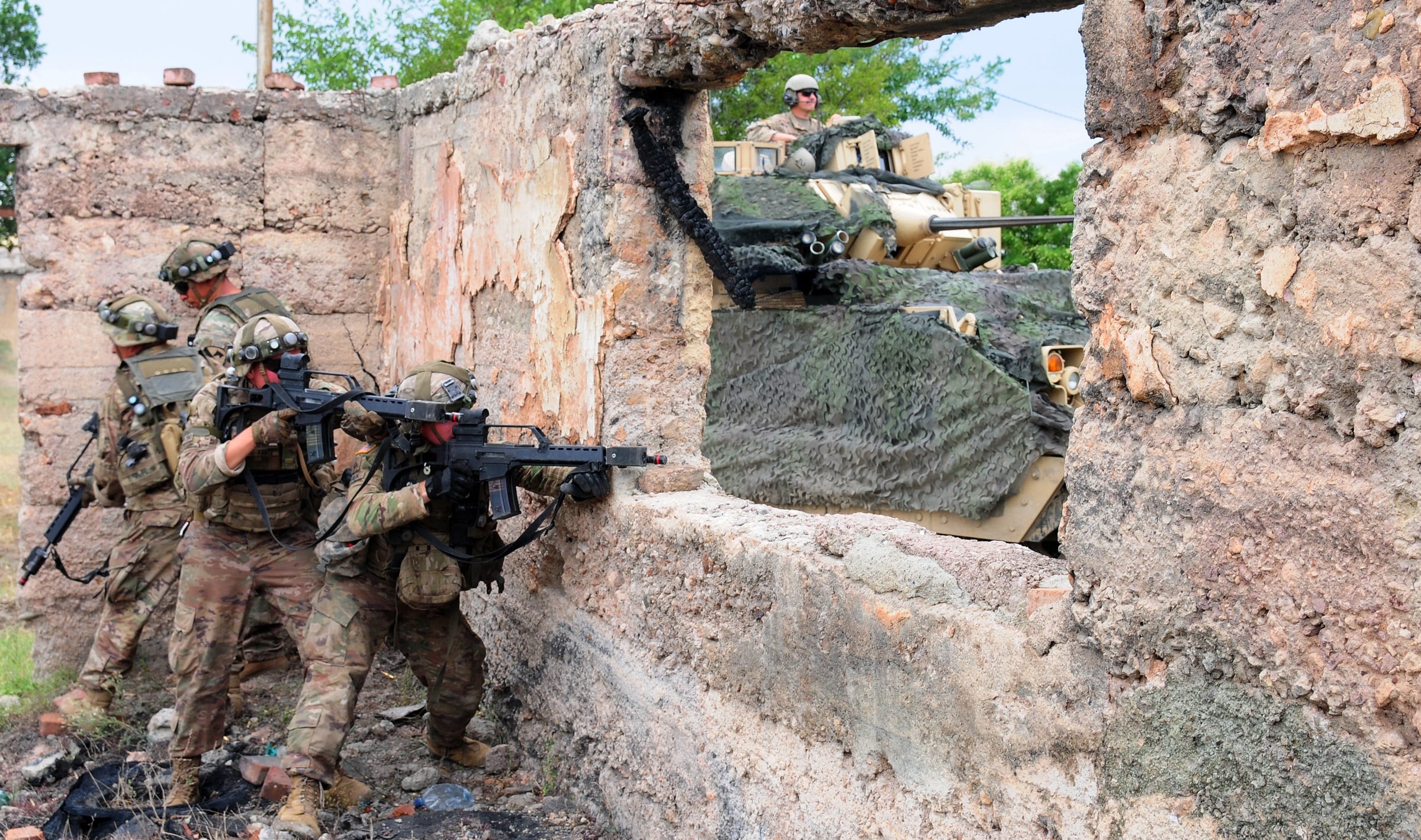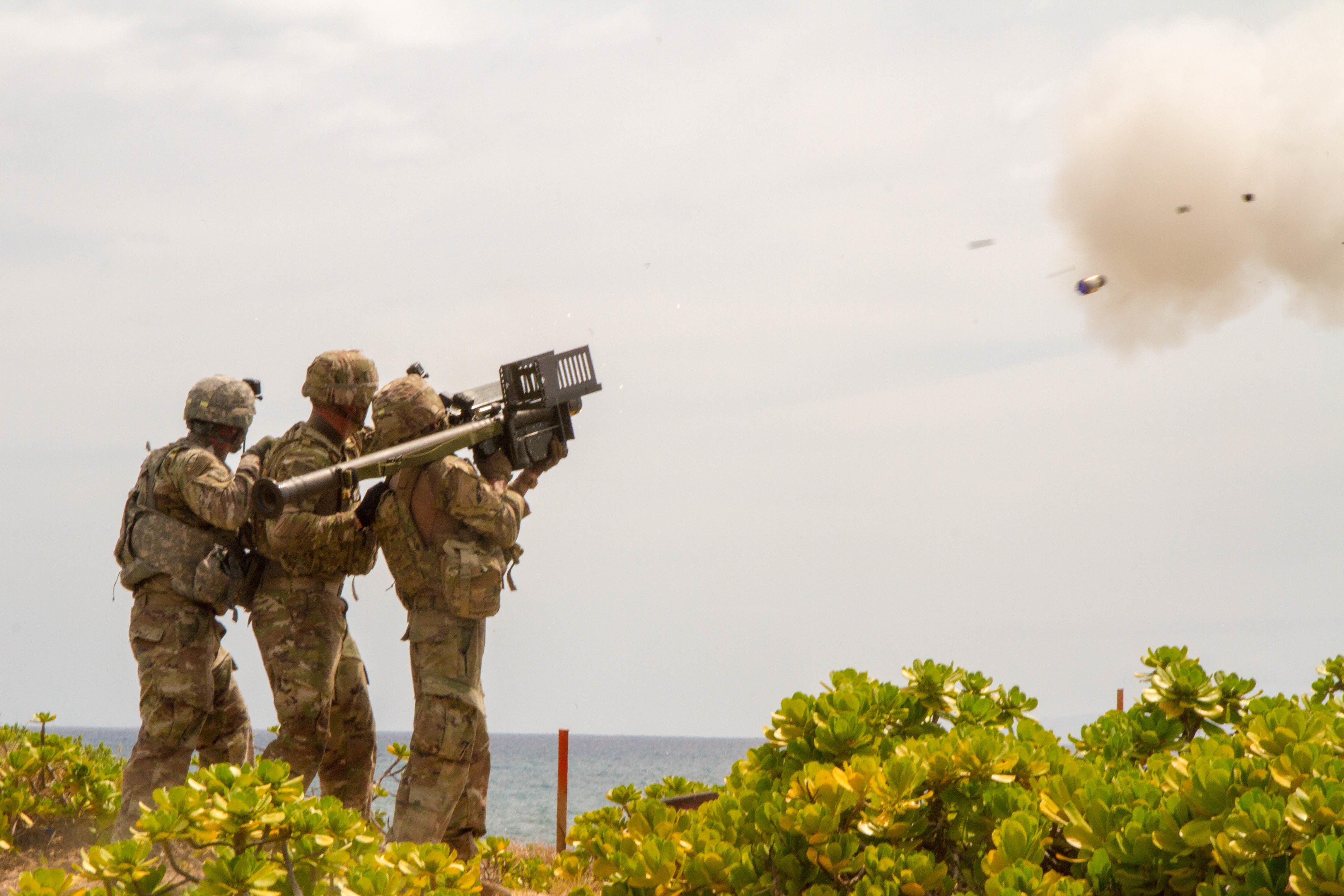Soldiers gearing up for the Army’s large European exercise this spring will arrive on the continent in a variety of ways, but most will be taking planes.
“The vast majority of the soldiers participating in the exercise will travel by air,” Army spokeswoman Lt. Col. Robin Ochoa said. “Sea lift is reserved principally for equipment and supplies.”
The exercise is scheduled to be held in April and May, and will take place in 10 different countries and features a fictional near-peer competitor set in the year 2028.
Here is a breakdown of the U.S.-based units deploying as part of Defender 2020 that have been provided to Army Times:
- 82nd Airborne Division (Airborne) Headquarters from Fort Bragg, North Carolina, will deploy approximately 150 personnel.
- 13th Expeditionary Sustainment Command from Fort Hood, Texas, will deploy approximately 300 personnel.
- 807th Medical Command (Deployment Support) from Salt Lake City, Utah, will deploy approximately 100 personnel.
- 1st Cavalry Division Artillery Command from Fort Hood, Texas, will deploy approximately 350 personnel.
- 1st Calvary Division Sustainment Brigade Headquarters from Fort Hood, Texas, will deploy approximately 250 personnel.
- 2nd Brigade Combat Team, 1st Armored Division from Fort Bliss, Texas, will deploy approximately 3,800 personnel.
- 116th Cavalry Brigade Combat Team from Boise, Idaho, will deploy approximately 3,800 personnel.
- 2nd Brigade, 3rd Infantry Division from Fort Stewart, Georgia, will deploy approximately 3,800 personnel.
- 1st Brigade Combat Team, 82nd Airborne Division (Airborne) from Fort Bragg, North Carolina, will deploy more than 1,000 personnel.
- 168th Engineer Brigade Headquarters from Vicksburg, Mississippi, will deploy approximately 200 personnel.
- 44th Medical Brigade from Fort Bragg, North Carolina, will deploy approximately 250 personnel.
- 11th Theater Tactical Signal Brigade from Fort Bliss, Texas, will deploy approximately 600 personnel.
The following units were previously announced by the Department of the Army for deployments to Europe in support of the United States’ commitment to NATO allies and partners and will also support the exercise:
- 1st Cavalry Division Headquarters from Fort Hood, Texas, will deploy approximately 500 personnel.
- 3rd Infantry Division Combat Aviation Brigade from Fort Stewart, Georgia, will deploy approximately 1,750 personnel.
Depending on duty station, soldiers’ equipment will depart from seaports in Charleston, South Carolina; Savannah, Georgia; and both Beaumont and Port Arthur, Texas.
The force heading for Europe will be the equivalent of a division and its equipment will land at multiple locations, including seaports in Antwerp, Belgium; Vlissingen, Netherlands; Bremerhaven, Germany and Paldiski, Estonia.

From there, heavy equipment, including about 480 tracked vehicles, will move by rail.
Soldiers will mostly be coming in through major air hubs in Europe and will convoy across the continent by bus, Brig. Gen. Sean Bernabe, G-3 for U.S. Army Europe, explained in October.
“There are approximately 20,000 pieces of equipment that will ship from the U.S. for the exercise," Ochoa said. “However, you should know that we are in the planning phases of the exercise and have not identified the type of vessels that will be used to transport this cargo yet.”
Once in Europe, U.S. soldiers will join allied nations to conduct both simulated and live training exercises across Germany, Poland and the Baltic states.
This will include multinational parachute jumps into Georgia, Lithuania and Latvia; a large river crossing in Poland; and combined arms maneuver training in northern Germany.
“Defender is really the U.S. effort to deliver this force to the continent and then we spread it out to a variety of different NATO exercises and U.S.-led local exercises,” U.S. Army Europe commander Lt. Gen. Christopher G. Cavoli said in mid-October.
RELATED

A command post exercise will be centered in Grafenwoehr, Germany, and will receive input from the U.S. Army’s Joint Modernization Command to implement emerging concepts still in development, like multi-domain doctrine.
Defender 2020, therefore, could be an interesting first-look at how the U.S. Army plans to combat, and where possible implement, emerging technologies like artificial intelligence, hypersonics, machine learning and robotics.
“We’ll take those for a test drive in simulation as part of this command post exercise,” Bernabe, the G-3 for U.S. Army Europe, said back in October.
The entire command post exercise "features a fictional near-peer competitor and actually puts that competitor on European terrain to allow us to get some good repetitions in large-scale ground combat,” Bernabe said. “The scenario will be set in a post-Article V environment ... and it’s actually going to be set in the year 2028.”
Kyle Rempfer was an editor and reporter who has covered combat operations, criminal cases, foreign military assistance and training accidents. Before entering journalism, Kyle served in U.S. Air Force Special Tactics and deployed in 2014 to Paktika Province, Afghanistan, and Baghdad, Iraq.





